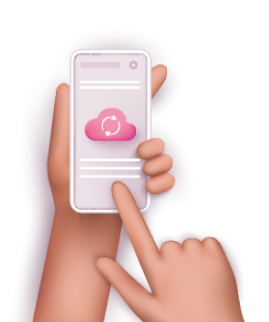

For Internet Service Providers, (ISPs) identifying the homes which are receiving poor internet experience on a regular basis is a real game-changer. These homes are in a category that is suffering, and let’s face it – a suffering home is one that is far more likely to churn.
As for churn-prevention, ISPs are currently tied to reactive measures, responding to incoming customer complaints, or waiting for reports that an incident has occurred. Those using customer analytics to try to get proactive about their customers and about problem-resolution, usually rely on data-based or call-center KPIs, technical support records, survey feedback, or CRM systems.
However, this information alone isn’t necessarily accurate enough and doesn’t provide the insights that ISPs need to practice proper customer-retention. It’s widely understood that retaining existing customers is far more cost-efficient than acquiring new ones. In today’s economic downturn, Telcos need to be two steps ahead of their subscribers, using rich resources of data and analytics to truly understand which segment of their user-base is in the red zone, and what a suffering home looks like, before it’s too late.
What is Missing from Today’s Telco Customer Analytics?
Customer Analytics today is missing some serious tricks. On one hand, the available data fails to take into account the entire subscriber base, including those who don’t call or fill in a survey. On the other hand, ways to obtain more valuable data is limited, and even once the data has been accessed, it’s not easy to translate it into actionable insights. As a result, CSPs don’t have the ability to fully understand what their subscribers’ are experiencing, what is causing a service degradation, and how to resolve it in the most efficient way.
What does this mean? Simply put, as long as Telcos don’t have a way to uncover and understand the behavior of their users, and are missing real-time insight into how they are experiencing the web, they can’t identify suffering homes. To solve this, there is an intense need for a metric that can measure the subscribers qualitative experience in real-time and under consideration of any sort of affecting conditions: the Quality of Experience score.
Take bandwidth issues for example. While many of today’s insights may flag when a home is experiencing low bandwidth, they’re still lacking a view of the context of that home. Low bandwidth is much more of a problem if there are multiple users simultaneously streaming content from different applications, but have no impact on the experience of those who are gaming or working from home.
The missing link is clear. Telcos need a way to gain a detailed understanding of what is happening within their subscribers’ homes. They need a way to identify devices and apps without impeding on subscribers’ privacy and a way to identify the context of each internet session, too.
What it Takes to Identify a Suffering Home
Telcos that understand the importance of identifying suffering homes and are proactive about finding a way to address their needs can turn to technologies that take their customer analytics to the next level. Veego’s AI-based platform doesn’t only provide a never-before-seen level of visibility into the connected home, but also offers a Quality of Experience score that accurately measures the subscribers’ experience, while taking all affecting conditions of an active internet session into account.
The lightweight Veego agent, placed on the router itself, uses our patented app ID technology to identify and monitor applications as they are being consumed. By ascertaining exactly which applications are being used across a household, and with a behind-the-scenes knowledge of each app’s ideal requirements, it can begin to put together a picture of the home topology and accurately pinpoint the Quality of Experience of each session.
Concurrently, Veego uses Device ID to gain even more granular visibility. After all, what would cause a poor experience on a Smart TV wouldn’t necessarily cause problems on a handheld device.
To reach the most accurate QoE score possible, Veego uses its proprietary algorithm to measure a vast array of Cloud, WAN, WiFi, Device, and application indicators. For each indicator a specific threshold is determined, so that action can be triggered when a service degradation reaches a certain limit.
The threshold is calculated dynamically over time, changing according to the kind of malfunctions, the duration between events, the length of the problem, and the number of malfunctions experienced. For this purpose, the Veego agents collect a variety of network telemetry data, such as, latency, jitter, packet loss and more, and factors those in when processing the thresholds. In short? With the help of a wide range of indicators, the proprietary app and device ID technology, and a contextual understanding of the user experience, we can define the exact point a good session turns bad.
At Veego, we created these thresholds through hundreds of hours of lab testing andcalibrating the data with real-world user sessions. This means our parameters are objective and thorough – statistically speaking they catch the vast majority of the issues that a user will actually feel.
Every session is given a score based on this analysis, which is known as an App Score. All App Scores on any given device will make up a Device Score, and then all Device Scores together will make up a Home Score. The Home Score can then be used to define when we flag a household as a “suffering home.”
Veego’s Home Score is the First Contextual Metric of its Kind
Our technology is extremely accurate at making decisions using a number of different parameters. While a dip in performance on its own may not cause an alert to be sent, if this is combined with a high frequency of this kind of degradation, or it has been less than a certain amount of time since a similar event has occurred, an alert can be triggered.
To add accuracy and context to this score, Veego also looks at the nature of each internet session. The algorithm asks questions such as, Is the WiFi in active use? What activity is being performed? How severe is the malfunction? A service degradation during an active session of gaming or streaming for example will impact the App Score more significantly than a drop in bandwidth during a regular browsing session.
With greater insight into the real context, we can uncover the metrics that equate to each subscriber’s actual real-world experience. For example, severity levels are split into Warning, where the user is unaware of the problem, Critical, where the user is seeing the impact of the degradation on their internet experience, and Broken, where the activity they are trying to complete has stalled completely.
With all of this data at hand, Veego consolidates the weighted information for each device, and then provides a single Home Score calculation.
Introducing Your New Subscriber Segment: Suffering Homes
A contextual Quality of Experience score is what Customer Analytics has been missing. With Veego’s Home Score, an ISP, for the first time, can understand when a household is having a poor internet experience. They can recognize when the users are feeling the problem, and analyze over time when these problems are not simply one off events, but are causing continued frustration and bad feelings.
By segmenting your subscribers into this new category of suffering homes, you have a risk category that can make all the difference. Subscribers don’t want to move internet provider, in fact only 15% say they are “very likely” to change ISP this year. However, internet is no longer a ‘nice to have’, and if performance is poor over time, they will quickly consider switching to the competition.
By identifying suffering homes, you can target proactive outreach in their direction, proven to raise the perception of your brand by 68% of consumers. Have the right answers ready when subscribers call your Technical Support Representatives, act ahead of time to fix issues when users are at the warning stage, and target the ‘silent majority’ who never call but will notice when a problem is quickly resolved, or when the number of degradation issues reduces over time.
Make Retaining Subscribers Your New Year’s Resolution
Churn in Telecommunications sits at 31%, one of the highest rates across industries. This translates into millions of dollars in losses every quarter, as well as the heavy costs of acquiring new customers compared to retaining existing ones.
By using objective and contextual data into the subscriber experience, you can place investment in the right places, channeling intervention where it’s needed the most, and actively supporting suffering homes to reduce discontent.
As we face an economic downturn entering 2023, ISPs have a responsibility to put data to work in identifying the subscribers most at risk of churn, and then monitoring and proactively caring for this segment, before you lose them for good.
Interested in seeing how Veego’s Home Score could transform your limited Customer Analytics? Let’s talk.





